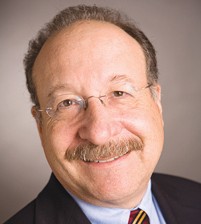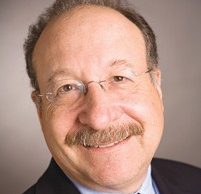
Henry Dubroff
With the Affordable Care Act under fire from a hostile Congress now in Republican control and also facing a potentially devastating challenge in the Supreme Court, it may seem an odd time for a White House conference on ACA issues.
But that’s precisely what happened late last month when President Barack Obama took the podium for a 15-minute pep talk on the future of Obamacare and the landmark legislation passed in his first term.
Among those in the audience was Sansum Clinic CEO and Medical Director Dr. Kurt Ransohoff, a practicing physician in Santa Barbara who still manages to find the time to maintain an active internal medicine practice.
I caught up with him shortly after he got off a plane from Washington, D.C. and during a 15-minute chat, he outlined what he views as the future of ACA and future challenges for the medical field.
Ransohoff said the president’s grasp of issues related to health care was impressive as was his commitment to seeing through the one piece of legislation that will likely define his presidency. “He’s a very charismatic speaker on a very complex subject,” he said.
Equally impressive, Ransohoff added, is the president’s personal commitment to ACA, despite potential legislative challenges and a Supreme Court case over the status of states using the federal health care exchange. Although the case could go either way, most of the people I know expect that Chief Justice John Roberts will uphold ACA, despite its flaws, as he did in an earlier challenge over subsidies.
Assuming “the wheels don’t come off” via congressional or high court action, Ransohoff sees that half the mission, perhaps the easiest half, of Obamacare, has largely been accomplished.
The first mission was expanding access to care. The administration and independent websites estimate that about 16.4 million people have signed up for or extended coverage under ACA with about 11.7 million enrolled; the rest are young adults who are able to remain in their parents’ plan until age 26.
The next step, Ransohoff said is to work on controlling health care costs by developing new models for care. “But,” he added quickly, “that’s really hard.”
Ransohoff said it appeared the administration was honestly trying to get new ideas and not impose pre-set views. In a session with the chief medical officer for Medicare, Ransohoff said the opportunities and challenges for changing the cost curve started to become apparent.
The big opportunity, he said, is to turn away from today’s “fragmented fee for service” model which involves a lot of inefficiency. A better model would be to care for a population as a whole in a city, state or region and manage the delivery of care to achieve better and cheaper outcomes.
The biggest challenge he said is the geographic diversity of America. Creating a model that could apply everywhere is going to be economically and politically very difficult. “How do you deal with the guy (practicing medicine) in a town of 3,000 and then all of New York City” with one set of metrics.
The outcome, he said, is likely to be a more integrated system that puts less paperwork pressure on patients and makes costs more transparent. For surgeries such as hip replacements he said, he expects a “push toward bundled payments” where a patient gets a full range of services for one price. A single payer distributes the Medicare or insurance payments to hospitals and care providers. “That’s an easy buoy to lift,” said Ransohoff.
A more complex issue, he said, is how to compensate doctors and hospitals when they treat patients “with multiple chronic illnesses and a psychological overlay.” It hard to create a “fixed-price menu” he said, for treating a disease or a set of diseases “that lasts 10 years.”
Ransohoff wouldn’t elaborate, but said both parties are waiting for a decision. The bottom line is that changing the health care system may also involve changing the way disparate government agencies define terms like “integration” and “competition.”






 Print
Print Email
Email

















